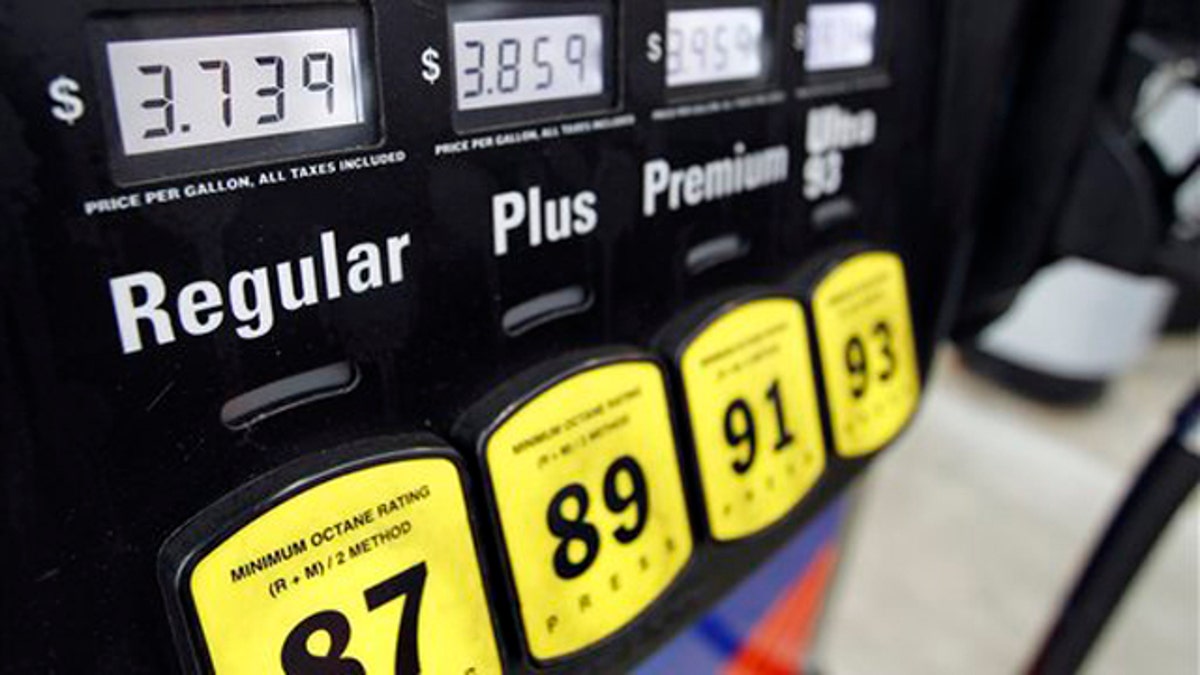
Feb. 24, 2012: Gas prices are posted at a Sunoco gas station in Philadelphia. (AP)
It may sound humdrum, but the reason gasoline prices are high is because of supply and demand. This is exactly what you would expect an economist to say, but it also is true.
World demand is expanding faster than supplies are being discovered, and this is likely to remain true going forward with both China and India — the two largest countries in the world in terms of population — in the boost phase of the growth and development of a middle class with all of the appliances and cars that go with them. Put that together with the beginnings of an economic recovery in the U.S. and you have a recipe for higher prices.
Transient effects such as the need for refinery maintenance and the switch to lighter “summer blends” in the gasoline market also play a role, but they really aren’t the major drivers of the fundamental long-term trend.
That’s why futures markets are predicting higher prices — because market fundamentals predict that the balance between supply and demand will remain tight in the future.
We shouldn't expect a crackdown on "market manipulation" to have much of an effect because the market isn't being manipulated in any systematic way. Both the White House and the president's opponents understand this, which is why one side is making it into an election-year issue and the other side is manufacturing photo ops so the president can appear to be doing something about it.
[pullquote]
Expect more pointless election-year grandstanding as the campaign grinds on.
Other popular suggestions for bringing prices back down are equally likely to amount to little more than headlines for one or two news cycles: Federal taxes on gasoline are less than 20 cents per gallon. Sure, we could eliminate them (and funding for road improvements along with them) but it wouldn’t make much of a dent at the pump with prices already well above $4 per gallon in most of the country.
Releases from the Strategic Petroleum Reserve won’t do much either.
Suppose we released 60 million barrels as President Bush did a decade ago. That is about three days consumption for the US. Does anyone really think that will turn around long-term trends?
Even the most optimistic view of drilling in the Arctic National Wildlife preserve would give us maybe 2 million barrels a day more but at only 2 percent of world production (and that only years in the future) nothing about this will help us in 2012.
There are things the president and Congress can do in the long run if they are willing to promote efficiency and alternative sources of energy, but even there, supply and demand are going to be the major determinants of any energy switching or efficiency we see in years ahead.
Let’s all remember that when the world switched from coal to oil a century ago, it was largely due to the higher prices associated with the increasing scarcity of then-recoverable supplies of coal.
Long before that, the switch from wood to coal only happened in earnest when the Europeans finished cutting down virtually all the trees they had handy. So our politicians can try to make a difference but most of what happens is beyond their control.
The unpleasant conclusion from all of this is that in the short run the only thing likely to bring gas prices back down is a slide back into recession. Nobody should want that!
Steven Kyle is an associate professor at the Dyson School of Applied Economics and Management at Cornell University
